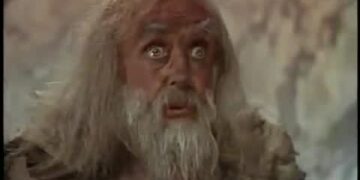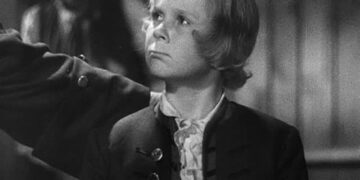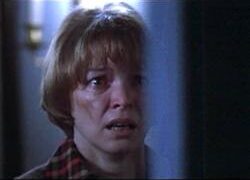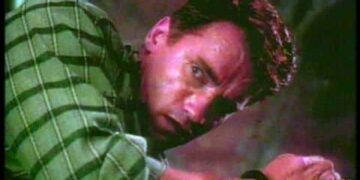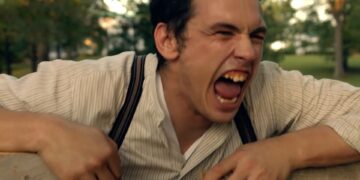Fahrenheit 451 is a dystopian novel written by Ray Bradbury and published in 1953.
The story is set in a future society where books are banned and burned by the government to prevent the spread of dissenting ideas and knowledge.
The title refers to the temperature at which paper ignites, symbolizing the destruction of intellectual freedom and the power of censorship.
In this article, we will explore the novel’s background, story, and characters, as well as the cinematic adaptation by Franí§ois Truffaut, and other media inspired by the novel.
We will also delve into the unique aspects of the story’s dystopian world and the significance of the Fahrenheit 451 universe.
Ray Bradbury: The author behind the dystopian novel
Ray Bradbury was an American author and screenwriter known for his work in science fiction, fantasy, and horror genres.
Born in 1920, Bradbury had a deep love for literature and storytelling from a young age.
Over the course of his career, he published numerous novels, short stories, plays, and screenplays, earning him a reputation as one of the most celebrated writers of the 20th century.
Fahrenheit 451 is considered one of Bradbury’s most famous and influential works, addressing themes such as censorship, conformity, and the importance of intellectual freedom.
Despite being written over six decades ago, the novel’s themes continue to resonate with readers today, making it a timeless literary classic.
Book summary: Fahrenheit 451’s compelling story
Fahrenheit 451 tells the story of Guy Montag, a fireman whose job is to burn books in a society where they are outlawed.
Montag lives in an oppressive, dystopian world where people are discouraged from thinking critically and seeking knowledge.
Instead, they are encouraged to consume mindless entertainment through television screens and wall-to-wall parlors.
Montag’s life takes a dramatic turn when he meets his free-spirited neighbor, Clarisse McClellan.
Through her questioning of society and its values, Montag begins to doubt the purpose of his job and the world he lives in.
As he secretly starts reading the books he’s supposed to burn, he becomes increasingly disillusioned with the government’s attempts to control its citizens and stifle intellectual curiosity.
With the help of a former professor named Faber, Montag decides to rebel against the system, trying to preserve the knowledge contained in books and fight for a world where people are free to think and learn.
This decision puts Montag at odds with his wife, Mildred, who remains loyal to the government and its values, as well as his boss, Captain Beatty, who becomes determined to bring him down.
Franí§ois Truffaut’s cinematic adaptation: A movie summary
In 1966, French filmmaker Franí§ois Truffaut adapted Fahrenheit 451 into a feature film starring Oskar Werner as Montag and Julie Christie in a dual role as Clarisse and Mildred.
Truffaut’s adaptation is notable for its striking visual style, which emphasizes the sterile, controlled environment of the novel’s dystopian world.
The movie follows the same basic plot as the novel, with Montag becoming increasingly disillusioned with his role as a book-burning fireman and turning against the oppressive government.
However, there are some key differences between the book and the film, such as character changes and the omission of certain plot elements.
Despite some mixed reviews upon its release, Truffaut’s adaptation has since become a cult classic, appreciated for its thought-provoking themes and unique visual style.
Comparing the book and the movie: Key differences and similarities
While both the book and the movie tell the same core story, there are several differences between the two.
For instance, the character of Clarisse in the film is a combination of the novel’s Clarisse and Faber, serving as Montag’s guide and mentor throughout his journey.
Additionally, the Mechanical Hound—a robotic enforcer that hunts down dissenters in the book—is absent from the film adaptation.
However, both versions effectively portray the oppressive nature of the society Montag lives in and his struggle against conformity and censorship.
The striking visuals of the film, such as the towering walls of television screens and the vast, empty spaces of the city, mirror the novel’s descriptions of a world devoid of true intellectual and emotional connections.
Ultimately, both the book and the film serve as powerful cautionary tales about the dangers of censorship, conformity, and the suppression of knowledge.
Exploring Fahrenheit 451’s dystopian world: Setting and film locations
Fahrenheit 451 is set in an unspecified future in a society where books are considered dangerous and subversive.
This dystopian world is characterized by its sterile, controlled environment, with people living in vast, empty cities and consuming shallow entertainment through wall-to-wall television screens.
The film adaptation of Fahrenheit 451 was shot primarily in England, with locations such as the Royal College of Physicians in London and the University of Essex campus in Colchester serving as the backdrop for the story’s dystopian cityscape.
These modernist, Brutalist structures helped to create the cold, impersonal atmosphere of Montag’s world, reflecting the novel’s themes of conformity and control.
Who’s who: Character analysis and parent guide
Fahrenheit 451 features a diverse cast of characters who each contribute to the story’s exploration of censorship, conformity, and intellectual freedom.
Some of the main characters include:
- Guy Montag: The protagonist of the story, Montag is a fireman who becomes disillusioned with his role in burning books and starts to rebel against the oppressive society he lives in.
- Clarisse McClellan: Montag’s curious and free-spirited neighbor, who encourages him to question the values of his society and sets him on the path to rebellion.
- Mildred Montag: Montag’s wife, who remains loyal to the government and its values, and represents the apathy and conformity of the society they live in.
- Captain Beatty: Montag’s boss and the main antagonist of the story, Beatty is a cunning, manipulative figure who seeks to maintain the status quo and prevent Montag from spreading dissent.
Parents should be aware that Fahrenheit 451 contains themes of violence, censorship, and oppression, which may not be suitable for younger readers.
However, the novel is an essential exploration of important social and political issues, making it a valuable educational resource for older children and teenagers.
Memorable quotes from Fahrenheit 451
Fahrenheit 451 is full of powerful, thought-provoking quotes that reflect the themes of censorship, conformity, and intellectual freedom.
Some notable examples include:
- “It was a pleasure to burn.” – Guy Montag
- “You don’t have to burn books to destroy a culture. Just get people to stop reading them.” – Ray Bradbury
- “We need not to be let alone. We need to be really bothered once in a while. How long is it since you were really bothered? About something important, about something real?” – Clarisse McClellan
- “The magic is only in what books say, how they stitched the patches of the universe together into one garment for us.” – Faber
Bernard Herrmann’s captivating soundtrack
The soundtrack for Franí§ois Truffaut’s film adaptation of Fahrenheit 451 was composed by Bernard Herrmann, a renowned film composer known for his collaborations with directors such as Alfred Hitchcock and Brian De Palma.
Herrmann’s score for Fahrenheit 451 is characterized by its haunting, atmospheric quality, which adds to the film’s sense of tension and unease.
The soundtrack features a mix of orchestral and electronic elements, reflecting the dystopian world of the story and the clash between the old and the new, the natural and the artificial.
Herrmann’s score is now considered a classic, and its influence can be heard in the work of numerous contemporary film composers.
Curiosities and trivia: Unveiling lesser-known facts
There are several interesting facts and tidbits about Fahrenheit 451 and its various adaptations that may surprise even the most dedicated fans:
- Ray Bradbury wrote the first draft of Fahrenheit 451 on a rented typewriter in the basement of the UCLA library, where he was charged ten cents per half-hour to use the machine.
- The book’s title, which refers to the temperature at which paper burns, was originally going to be “The Fireman,” but Bradbury changed it after consulting a fire chief about the actual temperature at which paper would ignite.
- Franí§ois Truffaut initially wanted to cast Terence Stamp as Montag in his film adaptation, but Stamp declined the role, and it ultimately went to Oskar Werner.
- In the film, the books that are burned are not actual books but carefully crafted replicas made of asbestos, a fire-resistant material.
Tips for cosplay: Dress like your favorite Fahrenheit 451 characters
Cosplaying as a character from Fahrenheit 451 is a great way to pay tribute to the novel and its themes.
Some tips for creating a costume based on the story’s characters include:
- Guy Montag: To cosplay as Montag, wear a dark, fire-resistant jumpsuit or uniform, along with a fireman’s helmet and a badge with the number “451” on it. Carry a prop flamethrower or fire extinguisher to complete the look.
- Clarisse McClellan: For a Clarisse costume, opt for a simple, modest dress, and natural makeup. You can also carry a small bouquet of flowers to represent her love for nature and her free spirit.
- Captain Beatty: To dress as Beatty, wear a dark, authoritative uniform similar to Montag’s, but with additional insignia or decorations to denote his higher rank. Consider carrying a prop book with a burnt cover to symbolize his role as a book burner and enforcer of censorship.
Ray Bradbury’s other works and their impact on literature
In addition to Fahrenheit 451, Ray Bradbury has written numerous other novels, short stories, plays, and screenplays that have left a lasting impact on the literary world.
Some of his other well-known works include:
- The Martian Chronicles (1950): A collection of interconnected short stories about the human colonization of Mars and its impact on both the native Martians and the colonizers.
- Something Wicked This Way Comes (1962): A dark fantasy novel about two young boys who must confront a sinister carnival that comes to their town, bringing with it supernatural forces and dark secrets.
- The Illustrated Man (1951): A collection of 18 science fiction short stories, each connected by the common theme of a mysterious man covered in animated tattoos that tell the stories of the future.
Bradbury’s work has influenced countless authors and filmmakers, and his unique blend of science fiction, fantasy, and horror continues to captivate readers and audiences today.
The ending explained: Unraveling Fahrenheit 451’s conclusion
Fahrenheit 451’s conclusion is open to interpretation, with Montag joining a group of outcasts who have memorized entire books to preserve their knowledge.
These “book people” represent hope for a future where intellectual freedom and the pursuit of knowledge are once again valued.
As the city is destroyed by a devastating war, Montag and the book people set out to rebuild society, with the knowledge they carry within them as the foundation for a new, more enlightened world.
The novel’s ending serves as a powerful reminder of the importance of preserving knowledge and the dangers of censorship and conformity.
Remakes, sequels, and spin-offs: Expanding the Fahrenheit 451 universe
In addition to Franí§ois Truffaut’s 1966 film adaptation, Fahrenheit 451 has been adapted into various other media, including stage plays, radio dramas, and graphic novels.
In 2018, a new film adaptation directed by Ramin Bahrani and starring Michael B. Jordan and Michael Shannon was released, offering a modern take on the classic story.
While there have been no official sequels or spin-offs to Fahrenheit 451, the story’s themes and concepts have inspired numerous other works in the science fiction and dystopian genres, such as George Orwell’s 1984, Aldous Huxley’s Brave New World, and Margaret Atwood’s The Handmaid’s Tale.
Franí§ois Truffaut’s other notable films and media
Franí§ois Truffaut was a celebrated French filmmaker, known for his work in the French New Wave movement and his contributions to the development of auteur theory.
In addition to Fahrenheit 451, some of Truffaut’s other notable films include:
- The 400 Blows (1959): A semi-autobiographical coming-of-age drama that tells the story of a troubled young boy named Antoine Doinel, who would become a recurring character in several of Truffaut’s films.
- Jules and Jim (1962): A romantic drama about the complex relationship between two friends and the woman they both love, set against the backdrop of World War I and the interwar period.
- Day for Night (1973): A satirical comedy-drama about the making of a film, which serves as a love letter to the art of cinema and offers a behind-the-scenes look at the filmmaking process.
Similar media to Fahrenheit 451: Books and films for fans
Fans of Fahrenheit 451 may also enjoy the following books and films that explore similar themes of censorship, conformity, and dystopian societies:
- 1984 (1949) by George Orwell: A dystopian novel about a totalitarian society where the government exercises total control over its citizens’ lives, including their thoughts and language.
- Brave New World (1932) by Aldous Huxley: A dystopian novel set in a future society where people are genetically engineered and conditioned to be happy and content, but at the cost of individuality and freedom.
- The Handmaid’s Tale (1985) by Margaret Atwood: A dystopian novel about a theocratic society where women are stripped of their rights and forced into roles as reproductive slaves.
- Equilibrium (2002), directed by Kurt Wimmer: A dystopian action film set in a future society where emotions are suppressed through drugs, and all forms of art and expression are outlawed.
Book club questions: Sparking discussion on Fahrenheit 451
If you’re planning to discuss Fahrenheit 451 in a book club or with a group of friends, consider the following questions to spark conversation and debate:
- What aspects of Fahrenheit 451’s dystopian society do you find most disturbing or thought-provoking?
- How do the characters of Montag, Clarisse, Mildred, and Beatty represent different attitudes and perspectives on censorship and conformity?
- What role does technology play in Fahrenheit 451’s dystopian world, and how does it relate to our own society’s dependence on technology and media?
- In what ways does Fahrenheit 451 serve as a cautionary tale about the consequences of censorship and the suppression of knowledge?
- How do the book and film adaptations of Fahrenheit 451 compare in terms of their storytelling and visual styles, and which version do you prefer?
Video games inspired by Fahrenheit 451 and other dystopian worlds
The dystopian themes and settings of Fahrenheit 451 have inspired numerous video games that explore similar concepts, including the following:
- Deus Ex (2000): A cyberpunk action RPG set in a dystopian future where powerful corporations and governments control the world through technology and manipulation.
- Bioshock (2007): A first-person shooter set in the underwater city of Rapture, a failed utopia built on the principles of objectivism and individualism.
- Orwell (2016): A narrative-driven simulation game where players take on the role of a government agent tasked with monitoring citizens and uncovering potential threats to the state.
A travel guide to visit Fahrenheit 451 film locations
For fans who want to explore the real-life locations used in Franí§ois Truffaut’s film adaptation of Fahrenheit 451, consider visiting the following sites in England:
- Royal College of Physicians in London: This striking, modernist building served as one of the primary locations for the film, representing the sterile, controlled environment of the novel’s dystopian world.
- University of Essex campus in Colchester: The university’s Brutalist architecture provided the backdrop for the film’s cityscape, emphasizing the oppressive nature of the society Montag lives in.
Conclusion
Fahrenheit 451 remains a powerful and thought-provoking exploration of censorship, conformity, and the importance of intellectual freedom.
Through its compelling story, memorable characters, and striking visuals, both the novel and its various adaptations continue to captivate and inspire readers and audiences around the world.
Whether you’re a longtime fan or new to the story, there’s always more to discover in the rich, dystopian world of Fahrenheit 451.


